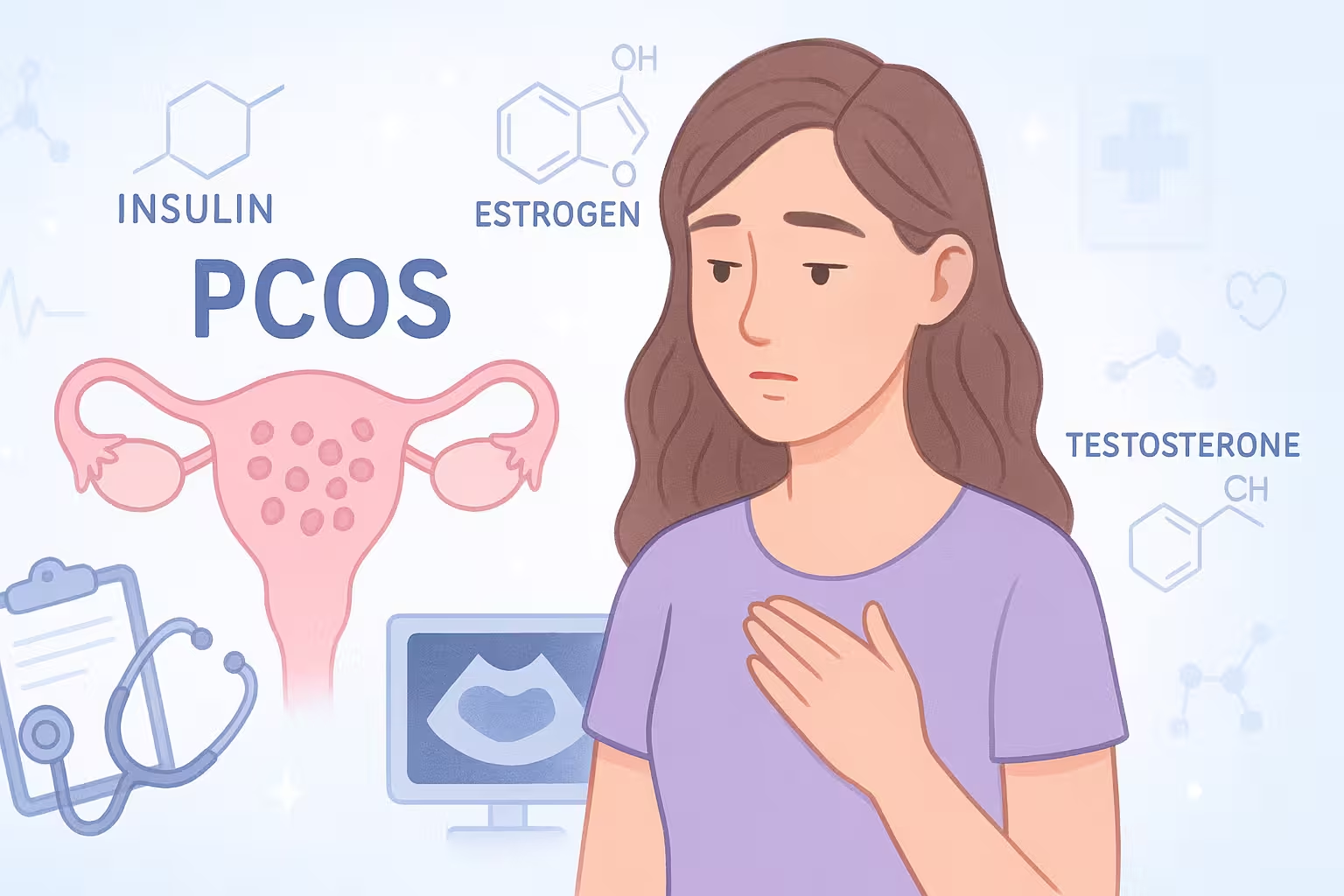Physical Address
304 North Cardinal St.
Dorchester Center, MA 02124
Physical Address
304 North Cardinal St.
Dorchester Center, MA 02124

Polycystic Ovary Syndrome (PCOS) is a complex hormonal condition affecting millions of women worldwide, particularly during their reproductive years. It is one of the leading causes of infertility, but its impact extends far beyond reproduction. PCOS is often misunderstood, underdiagnosed, and mismanaged due to its wide spectrum of symptoms and health implications. In this blog, we provide a comprehensive overview of PCOS, strictly following the writer course content guide, including verified medical information, structured layout, and reader-friendly language.
Polycystic Ovary Syndrome is a hormonal disorder where the ovaries produce an abnormal amount of androgens (male hormones) that are usually present in women in small amounts. The term “polycystic” refers to the presence of many small cysts (fluid-filled sacs) in the ovaries, although not all women with Polycystic Ovary Syndrome have cysts.
It affects 1 in 10 women of childbearing age. It is considered a lifelong condition with varying degrees of severity, and its presentation can change over time.
Read Also: Japan’s 19-Core Fiber Cable: The Engine Behind 1.02 Petabit/Second Speed
The exact cause of this syndrome is still unknown, but several factors contribute to its development:
Many women with Polycystic Ovary Syndrome have insulin resistance, where the body’s cells do not respond properly to insulin. This leads to higher insulin levels, which can increase androgen production by the ovaries.
Increased levels of androgens interfere with the development and release of eggs during ovulation, contributing to irregular periods and infertility.
PCOS tends to run in families. If your mother or sister has PCOS, your risk may be higher.
Low-grade inflammation in women with PCOS has been linked to elevated androgen levels.
PCOS symptoms can vary significantly from person to person, but the most common include:
This is one of the hallmark symptoms. Women may experience fewer than nine periods a year, heavy periods, or no periods at all.
Signs include:
Ovaries may become enlarged and contain numerous small cysts as seen on an ultrasound.
Insulin resistance often contributes to weight-related issues.
Including dark patches (acanthosis nigricans) and skin tags.
PCOS is one of the leading causes of infertility due to irregular or absent ovulation.
Increased risk of depression, anxiety, and mood swings.
There is no single test to diagnose PCOS. Diagnosis is based on clinical signs, symptoms, blood tests, and imaging. According to the Rotterdam Criteria (2003), a woman must have at least two of the following three features:
Ovaries appear larger than normal with multiple small follicles.
Other conditions like thyroid dysfunction, hyperprolactinemia, or adrenal hyperplasia must be ruled out.
Without proper management, PCOS can lead to long-term health issues:
Up to 50% of women with PCOS develop diabetes by age 40.
Increased risk due to obesity, high blood pressure, and abnormal lipid levels.
Irregular menstruation can lead to overgrowth of the uterine lining.
Especially common in overweight women.
Due to hormonal imbalance and stress from physical symptoms.
Polycystic Ovary Syndrome treatment focuses on managing individual symptoms and reducing long-term health risks. A multi-disciplinary approach is often most effective.
The first-line treatment for most women with PCOS.
Losing even 5–10% of body weight can restore ovulation and improve symptoms.
Hormonal fluctuations, body image concerns, and infertility can impact mental health significantly. Women with PCOS have higher rates of:
| Myth | Fact |
|---|---|
| It always causes infertility | Many women with PCOS conceive naturally or with minimal intervention |
| You must have cysts to have PCOS | Not all women with PCOS have ovarian cysts |
| Only overweight women get PCOS | It affects women of all body types |
| Birth control pills cure PCOS | They manage symptoms but do not cure the condition |
You should consult a healthcare provider if you experience:
Early diagnosis and intervention are key to preventing complications.
Polycystic Ovary Syndrome is a manageable condition with proper medical guidance, lifestyle changes, and consistent self-care. While it can affect fertility and increase health risks, early intervention and awareness can empower women to lead healthy lives. If you suspect you may have PCOS, seek medical advice and don’t ignore the symptoms.
Read Also: How to Perform Shravan Somvar Puja? Complete Guide, Rituals, and Significance